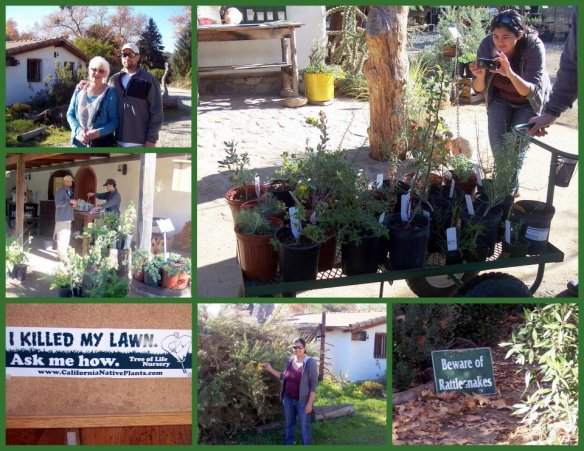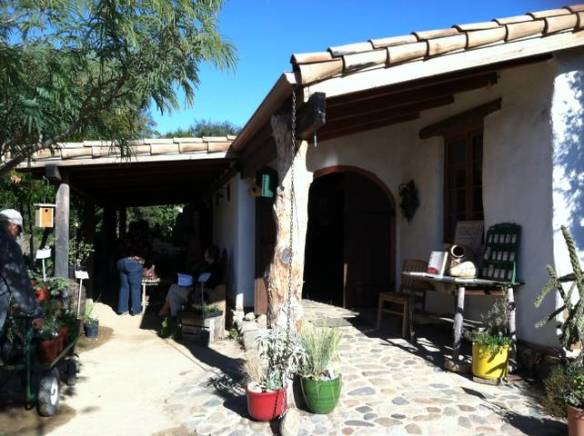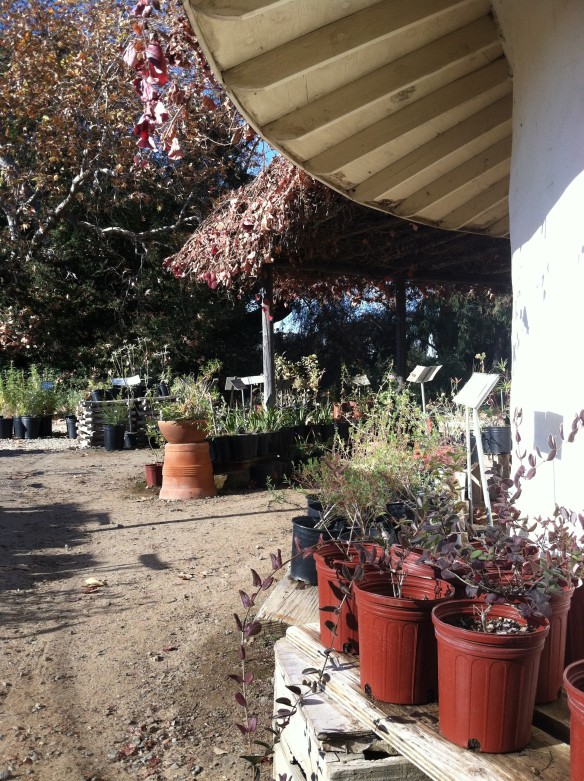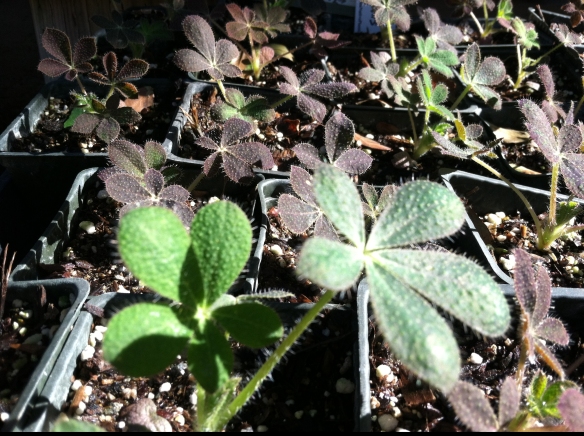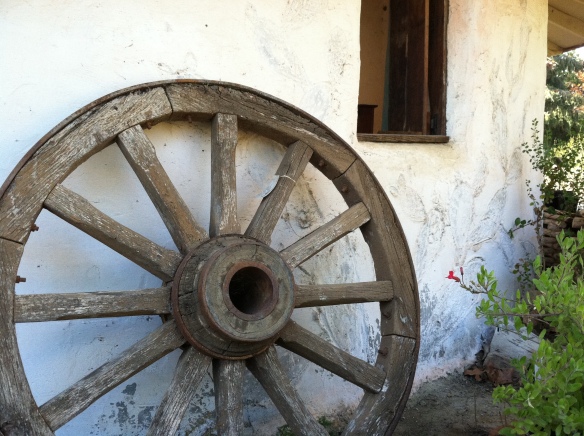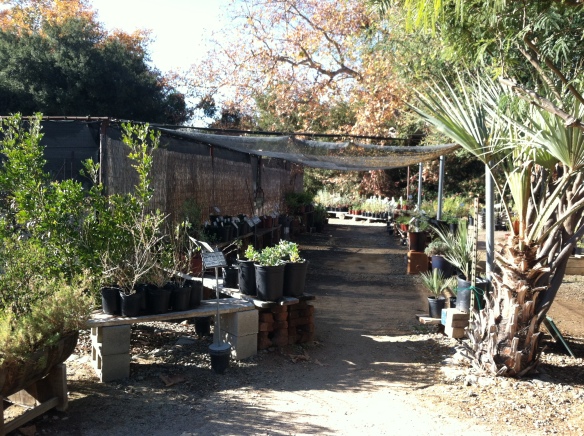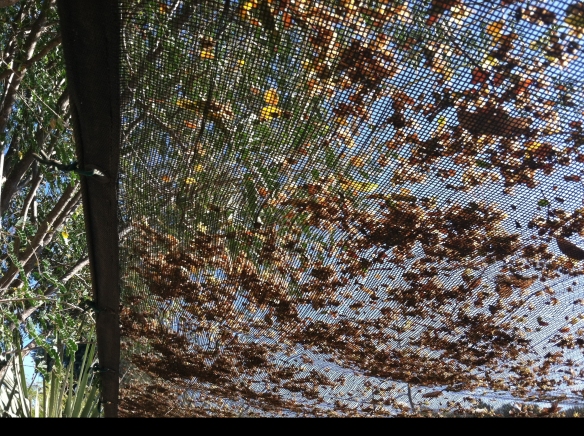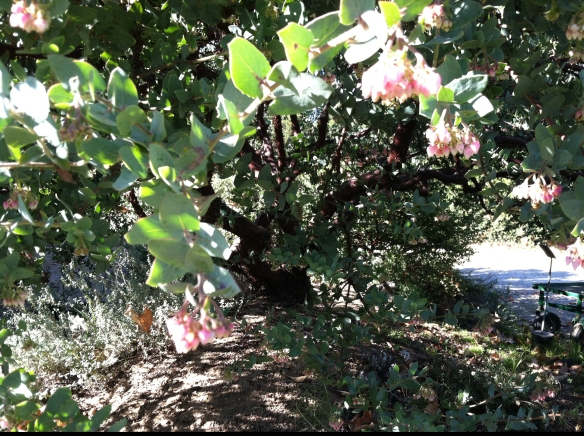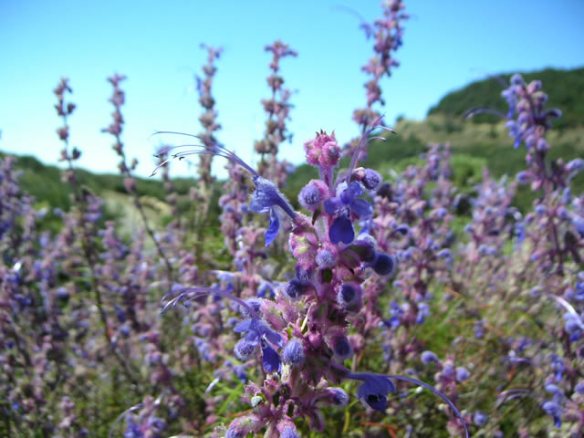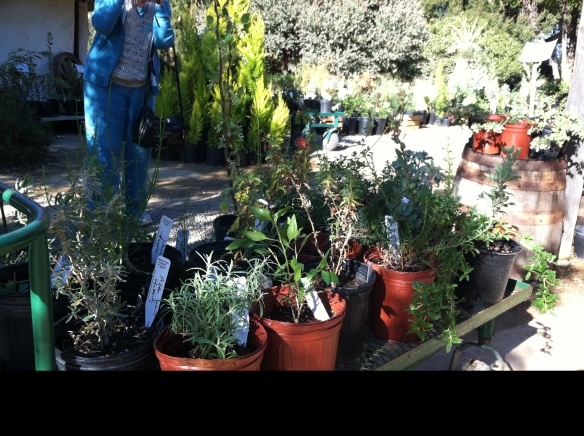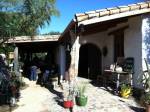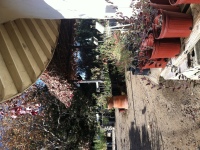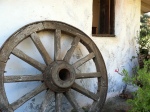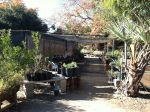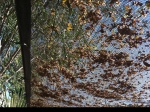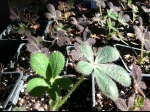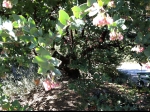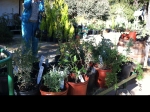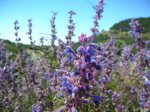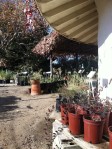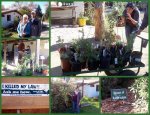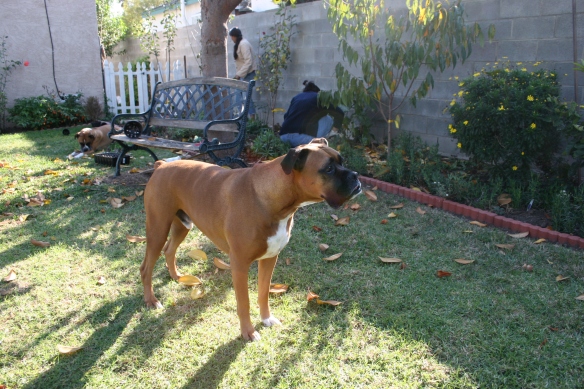A budget was alloted for the plants. I was elated. True, it could only buy tiny 1-gallon containers of twigs, but give these a year or two – and viola! A lush habitat awaits in thin plastic pots. The problem was – out of so many choices, what to get finally? Sure, I had a planting plan (see first post).
But I had redone it several times. In a small space (not even 700 sq feet), it is very difficult to choose the right plant or the right spot. My garden faces north, and part of it lies in the shadow of the house. So, the chosen plants would have to function in dry conditions, be native, do well in part-shade conditions, provide habitat for winged creatures, be non-poisoinous, be showy, and look presentable in a small front-yard (read – not grow into 10 ft tall monsters when your back is turned). Let’s see how many plants you come up with. I had dozens on my list.
I could only plant 10-12 reasonably without choking them all out of air and soil – hence, the redoing of the plan. One day, cheery Mimulus auranticus would be on my list. Next day, sturdy Epilobium californica would have knocked it off, only to be replaced by the glamorous Ribes indecorum. If you have a big yard, then your planting dreams will be easier to accomodate. In a small space, the mistakes show easily, and faults of an experimental gardener are more difficult to hide. Greed is mine. I had to really put a leash on my dreams and with a pounding heart slay plants off my list. Adieu, my sweet Salvia apiana. We shall meet again in another garden….
On a sunny, hot Californian winter’s day we set off (the day before New Years eve) to the nursery. I had gone over the list several times already, and was ready with my final one. We sat in the parking lot for a few minutes to drink water for the hot dry sun can really sap the energy, plus my heart was fluttering with nervousness. This was it. My final selection. I sought the help of one of the nursery staffers to locate the plants. The staffer read my list and said nonchalantly – “We don’t have a lot of these in stock”.
I should have had a heart-attack, a list I had edited and redited for months – the list was no-good. I quelled by bad feelings, and said with a half-hearted smile – “No problem”. I could work with alternatives. So, even with the final plan, there were some very last minute changes. The experimental gardener takes change in stride. In fact, the element of surprise was nice, because I added a couple of things that were recommended by the nursery people, which were not on my list. And removed one because I realized it was poisonous, a big no-no with the baby and dog around (I took off Solanum hindisianum as the berries are poisonous).
So, in a way, the change of the ‘list’ worked out really well. Plus, my husband added a plant to the cart that I had overlooked in my list – Manzanita ‘Lester Rowntree’. One was planted by the adobe house and was blooming with clusters of pink flowers, it’s deep red boughs sculpted by the wind and sun. Now, it holds primo real-estate in the front garden. Manzanitas can be fussy divas – they need good drainage, and just-so sun and water. We placed some gravel at the bottom of the hole we dug for the Manzanita in hopes it would provide good drainage. It’s in part-shade. We promise not to over-water it.
All in all, a very nice day. Tree of Life nursery is located in the town of San Juan Capistrano (on the way to San Diego) – with its beautiful mission and lovely brass bell (I’ve rung it once). Definitely merits a separate trip by itself. But that day, we ate a quick lunch, and hurried off home with the bounty. I may return to the nursery in spring. They were out of Trichostema lanatum (wooly blue curls) – such a popular item with gardners that they have to limit 2 per customer. If you have seen these grow when in flower – you will understand the strong passion it commands in the beating breasts of hot-blooded gardeners. I have saved a spot for one of these already….
- Tree of Life nursery has a beautiful adobe bookshop
- Choice of habitat awaits
- Cart-wheel rests against the adobe house
- A path leads to further delights
- Overhead net provided for the shade-needy plants
- Nettle Lupine
- Manzanita ‘Lester Rowntree’
- My cart is brimming…
- Trichostema lanatum (wooly blue curls)
- Habitat awaits
- A busy day – collage by Helen Cain

